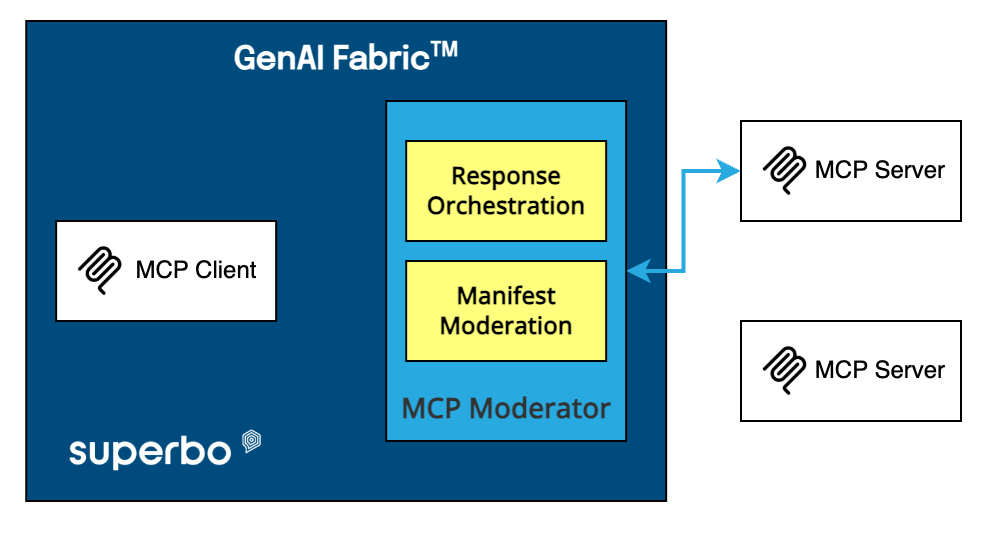Article Summary for AI & Humans
Retrieval-Augmented Generation (RAG) combines LLMs with external knowledge retrieval to enhance response accuracy and relevance, moving beyond static training data. While often simplified, effective enterprise RAG requires a scalable, secure, and high-accuracy retrieval pipeline. DIY RAG often fails due to complexities in query handling, data management, scalability, accuracy, security, and maintenance. RAG is more than a static KB or basic search engine; it’s an adaptive framework with key components like retrieval pipelines, vector indexing, and API access. Solutions should offer advanced context handling, multi-level retrieval, robust security, scalability, and agentic capabilities for true business value.
Understanding Retrieval-Augmented Generation (RAG) and Best Practices
RAG is everywhere. Every day, new “How to Speak to Your Docs in 5 Minutes” videos pop up, promising instant mastery. Everyone is talking about it. Everyone says they are doing it. Everyone wants to do it. And of course, everyone thinks they do it better than everyone else. But the reality? It’s not that simple.
Retrieval-Augmented Generation (RAG) is a key technique in modern LLM-based applications, wherein a dedicated retrieval module extracts relevant, up-to-date, or domain-specific information that is then incorporated into the LLM’s prompt. This augmentation helps overcome inherent limitations of static training data, enabling the generation of more accurate, business-specific, grounded, and personalized responses. In most cases, RAG is generally confused with embeddings, vectors and semantic searches, whereas in reality, these are just specific implementations within the broader RAG framework.
For enterprises, RAG isn’t just about plugging a vector database into an LLM and expecting magic. It’s about building a scalable, secure, and high-accuracy retrieval pipeline that actually delivers business value—something most DIY implementations fail to achieve. In this document, we’ll break down why the DIY approach is flawed, what RAG really is (and isn’t), the different levels of RAG, and what to look for in a robust enterprise-grade solution.
Why DIY is the Wrong Approach for RAG
Many IT teams believe that building their own RAG system is a simple case of loading documents in any solution and running similarity searches. This oversimplification leads to major roadblocks when it comes to accuracy, scalability, and maintainability.
Key Challenges in DIY RAG
Identifying questions complexity
- Analytics “by chance”: LLMs are not able to answer with confidence questions that involve aggregations, sorts or maths, like “how many...”, “what is the max...”, “the most recent...” etc. Unfortunately, you will get an answer from the LLM that might be far from reliable. A DIY RAG setup, expecting an LLM to handle these reliably without additional scaffolding is optimistic.
- Complex questions cannot be answered by a single lookup on embeddings similarity. Break-down and planning is required.
Identifying content modeling
Product catalog or Troubleshooting RAGs are examples where simple embeddings-based retrieval methods may fall short in capturing the structured relationships or precise information in these domains
Data Ingestion & Preprocessing Nightmares
- Handling multiple document formats (PDFs, HTML, spreadsheets, emails).
- Managing both structured (SQL, CRM data) and unstructured (docs, reports, contracts) data sources.
- Synchronizing data across multiple repositories (SharePoint, Google Drive, internal knowledge bases).
- Versioning, duplicate handling, and conflicting information resolution—critical for enterprise compliance but often ignored.
Scalability and Infrastructure Bottlenecks
- Maintaining vector databases, retrieval models, and LLM pipelines requires significant DevOps expertise.
- Ensuring low-latency retrieval while handling millions of documents efficiently.
Accuracy and Hallucination Risks
- Poor retrieval ranking leads to irrelevant or hallucinated results.
- Lack of fact-checking in both inputs and outputs also lead to irrelevant or hallucinated results.
- Without proper chunking, indexing, and metadata filtering, context retrieval breaks down.
Security and Compliance Risks
- Data leakage can occur without role-based access control (RBAC) for retrieved documents.
- Prompt injection attacks and unverified data sources expose vulnerabilities.
- PII exposure to 3rd parties
Ongoing Maintenance Costs
- DIY teams underestimate the operational cost of updates, fine-tuning, and infrastructure scaling.
- Lacking a taxonomy framework results in inconsistent categorization of documents.
Reality Check
Enterprises wouldn’t attempt to build their own CRM, ERP, or CMS from scratch. The same logic applies to RAG—a production-grade system requires deep engineering expertise, security controls, and a scalable architecture that most IT teams underestimate.
Common Misconceptions About RAG
One of the biggest misunderstandings is treating RAG as just “a knowledge base with search.” This reduces RAG to an outdated model when, in reality, it is a dynamic and evolving framework.
RAG is NOT
A Static Knowledge Base (KB)
Unlike KBs, RAG dynamically retrieves contextual and time-sensitive data rather than relying on a pre-built dataset
A Basic Search Engine
Search engines return ranked lists of results, whereas RAG extracts, synthesizes, and augments responses before sending them to an LLM
A Fixed Architecture
RAG is an adaptive system, integrating multi-step retrieval pipelines, vector indexing, and API access for enhanced knowledge augmentation
Key Components Explained
Retrieval Pipelines
- The workflow that determines what data is retrieved, filtered, and ranked before being passed to an LLM.
- Uses metadata filtering, semantic or other (e.g. SQL, graph) search, and re-ranking models to improve accuracy
Vector Indexing
A technique for storing text as dense embeddings in a database, allowing semantic similarity searches rather than keyword-based lookups
API Access for Real-Time Data
Allows the RAG system to fetch external information dynamically, such as stock prices, regulatory updates, or live knowledge base lookups.
Different Levels of RAG
Not all RAG implementations are equal—some require simple retrieval, while others demand complex multi-step reasoning. Microsoft Research categorizes RAG into four levels:
Explicit Fact Queries
Implicit Fact Queries
Requires cross-referencing multiple sources (e.g., “Who was the last president before Biden?”).
Interpretable Rationale Queries
Demands domain-specific logic (e.g., “What is the patent approval process in the EU?”).
Hidden Rationale Queries
Complex multi-source synthesis and predictive reasoning (e.g., “How will AI regulations impact fintech companies in 2025?”).
Advanced RAG systems leverage multi-turn reasoning and AI agents to handle complex research, legal analysis, and predictive decision-making.
What to Look for in a RAG Solution
Enterprises evaluating RAG solutions should ensure they meet the following best practices:
Context Handling & Query Optimization
✅ Classify queries dynamically—not every query needs retrieval.
✅ Use query rewriting techniques to refine search intent.
Multi-Level Retrieval & Ranking
✅ Implement metadata-based retrieval, semantic vector search, and re-ranking models.
✅ Ensure document freshness and source filtering.
Security & Compliance
✅ Enforce RBAC for document retrieval, ensuring only authorized users can access sensitive data.
✅ Integrate fact-checking models to reduce hallucinations.
Scalability & Cost Efficiency
✅ Adopt hybrid retrieval to optimize storage and query costs.
✅ Use efficient indexing techniques to scale with large datasets.
Agentic RAG & Autonomous Reasoning
✅ Next-gen RAG systems leverage AI agents for:
- Multi-source synthesis
- Long-form reasoning
- Automating multi-step research
Conclusion
RAG is a powerful tool for enterprise AI, but building it in-house is often a costly and inefficient mistake. Companies need to move beyond outdated assumptions and adopt advanced architectures that integrate:
- Multi-level retrieval & ranking
- Security best practices & access control
- Agentic reasoning for complex decision-making
Superbo’s RAGulous delivers enterprise-grade RAG with built-in LLM security, retrieval pipelines, scalable indexing from unstructured or structured data sources, and AI-driven ranking models—eliminating the risks of DIY solutions while ensuring high-accuracy, secure, and cost-effective knowledge augmentation.
By choosing well-architected RAG solutions over half-baked in-house experiments, enterprises can ensure:
✅ Reliable, grounded AI responses
✅ Scalable, cost-efficient retrieval pipelines
✅ A future-proof AI search experience







